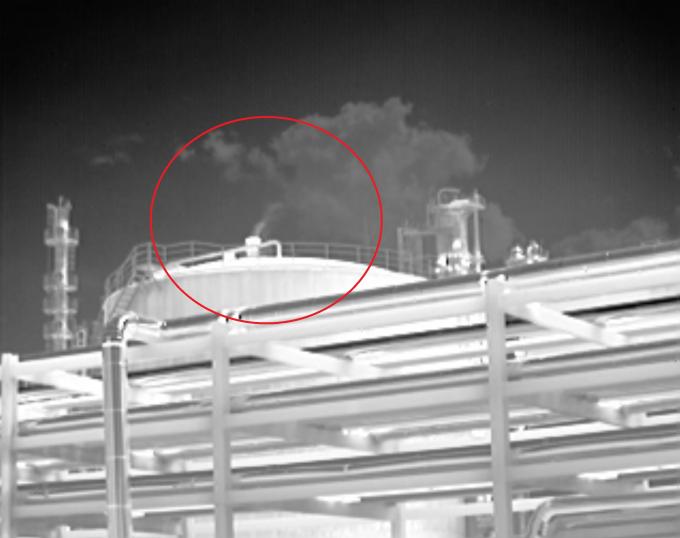In the modern age, safety for the environment and the pursuit of sustainability have become essential priorities for businesses operating with gases responsible for global warming. Among these gases, sulfur hexafluoride is known for its powerful insulation capabilities in electrical equipment but also for its significant global warming impact. With heightened rules on gas emissions, the need for robust leak identification is more urgent than ever. This is where cutting-edge camera technology for SF6 leak detection comes into play.
An SF6 leak detection camera utilizes sophisticated infrared technology to identify and detect leaks of this difficult-to-find gas. By gathering the distinct infrared emissions emitted by SF6, these cameras allow technicians to identify even the tiniest leaks rapidly and precisely, reducing environmental effects and improving operational safety. Grasping how this technology operates and its role in detecting leaks not only emphasizes its significance in energy and utility sectors but also demonstrates a major progress in addressing global warming.
Comprehending Sulfur Hexafluoride and Its Uses
Sulfur hexafluoride, also referred to as SF6, represents a colorless, odorless gas that remains extensively utilized in the power industry due to its excellent insulating properties. It is particularly effective at preventing electrical discharges and arcing in high-voltage equipment, which renders it the favored choice for insulating switchgear, circuit breakers, and transformers. The unique properties of SF6 facilitate enhanced compact designs in electrical systems, contributing to the efficiency and dependability of power distribution networks.
In parallel with its role in the electrical sector, SF6 finds applications in multiple other industries. It is used in the production of semiconductors, where it acts as a reactive ion etchant. The gas is further used in healthcare, such as in ultrasound imaging, where it serves as a contrast agent because of its elevated density and stability. As industries endeavor to improve their processes and technologies, the demand for efficient leak detection methods for SF6 has become increasingly important.
However, it is essential to recognize that SF6 has environmental implications. It represents a potent greenhouse gas with a global warming potential significantly higher than carbon dioxide, rendering its leakage a major concern. Consequently, innovations in leak detection technology, particularly the creation of SF6 leak detection camera s, have emerged as vital tools in reducing its environmental impact. These cameras allow for precise identification of leaks, assisting industries manage their SF6 usage responsibly.
The way SF6 Detection Devices Work
Sulfur hexafluoride gas detection cameras utilize sophisticated IR technology to detect leaks of SF6, a powerful GHG used in various commercial applications. Such cameras are engineered to spot the IR signals emitted by SF6 molecules, which are distinct relative to other gases. As soon as SF6 is found in the atmosphere, it captures infrared radiation, resulting in a detectable thermal signature which the camera can capture.
The cameras are equipped with sensitive infrared detectors that can render visible the gas even in low concentrations. When the camera is pointed toward an location where a leak is suspected, it analyzes the thermal visual and highlights regions where SF6 is present. The detection method is non-intrusive, enabling for real-time monitoring free from the need for physical contact or disruption of the system being analyzed.
Besides their detection capabilities, SF6 gas monitoring cameras often come with software that helps measure the leak rate and assess the extent of the leak. This information is crucial for upkeep and safety operations, enabling companies to take immediate action to reduce environmental impact and enhance safety standards. The incorporation of these cameras into routine inspections enhances overall system reliability and aids in compliance with ecological regulations.
Advantages of Using SF6 Camera Technology
Using SF6 camera technology offers significant benefits in the detection of leaks, particularly in high-voltage applications. One of the primary advantages is its ability to identify and observe SF6 gas emissions without the need for direct contact with machinery. This lowers the risk of incidents and increases safety for workers operating in proximity to high-voltage assets. The camera supplies immediate imagery, allowing for immediate assessment and response to possible leaks.
A further key benefit is the efficiency and accuracy of leak detection. SF6 cameras employ advanced infrared technology to detect even the smallest emissions. This accuracy minimizes false positives and ensures that maintenance teams can concentrate their efforts on actual leaks, leading to more efficient and timely repairs. By rapidly pinpointing leaks, organizations can significantly minimize the environmental impact of SF6 gas and enhance compliance with regulations.
Implementing SF6 camera technology can also lead to cost savings in the long term. Early detection of leaks can prevent extensive harm to machines and reduce the chance of costly downtime. Additionally, responsible management of SF6 gas not only helps in reducing greenhouse gas emissions but also contributes to lower operational costs, as companies can optimize their use of gas and avoid penalties related to environmental regulations. Overall, adopting this innovative technology positions companies to better manage their resources and improve their sustainability practices.

